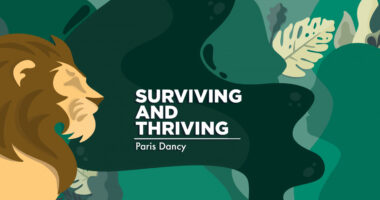My hopes for the future of Cushing’s include greater education
Better understanding is key to faster, more accurate diagnoses

It took me two years to get diagnosed with Cushing’s disease. I suffered as I moved from doctor to doctor, begging them to figure out what was wrong with me. I was tested for polycystic ovary syndrome (PCOS), congenital adrenal hyperplasia, thyroid issues, and cervical cancer. I had to quit my job to focus exclusively on obtaining a diagnosis. I endured countless blood tests, MRIs, and hospital visits as I visited multiple primary care physicians, gynecologists, endocrinologists, and other specialists.
When I finally learned what I had, I wept. Not because I was sick, but because finally, someone believed me. Someone had figured it out.
This experience made it clear that we need greater awareness about Cushing’s disease. Before my diagnosis, I’d never heard of the condition. Furthermore, many of my early symptoms were attributed to other issues and quickly dismissed. Acne? Could be stress. Period problems? Most likely PCOS. Weight gain? Could be a dietary issue. I wrote off symptom after symptom, letting myself be sick for far too long, simply because I wasn’t educated on what to look for.
It’s imperative we improve the diagnostic process so that future patients can get answers and start treatment sooner. But better education is just one of my dreams for the future of Cushing’s disease.
Education
I hope Cushing’s disease will become better known and that the world better understands it. I can’t even tell you how many people comment on videos I’ve posted, saying, “I thought this disease only affected dogs or horses.” I try my best to educate people through social media and my column, and I hope that others with Cushing’s will do the same so the disease will become more widely known.
I also think it’s important to recognize that there are different types of Cushing’s. As Cushing’s Disease News explains, “Cushing’s disease is a specific type of Cushing’s syndrome, which is a broader term that encompasses any health problem where the symptoms are driven by high cortisol levels. Cushing’s disease is a specific form of the syndrome caused by a tumor in the pituitary gland.”
There’s also cyclic Cushing’s, which involves sporadic, recurring bouts of excessive cortisol; ectopic Cushing’s, in which the tumor that releases too much of the ACTH hormone is somewhere besides the pituitary gland; and pseudo Cushing’s, a group of conditions that can present like the syndrome but have a different underlying cause. We’re all part of the same community, but our treatment plans will vary.
I have cyclic Cushing’s disease, and the biggest obstacle I faced during the diagnostic process was getting enough tests done. Because my cortisol is only occasionally elevated, some of my tests yielded normal results, and I was dismissed for a long time. when given the proper resources for testing, however, I discovered that every other week my cortisol would spike — up to eight times the normal amount!
I hope prolonged testing will become the norm so that others don’t have to fight the way I did.
PCOS versus Cushing’s
I also hope we’ll become able to differentiate between PCOS and Cushing’s more definitively. Cushing’s disease is commonly misdiagnosed as PCOS because of overlapping symptoms, such as weight gain, period problems, acne, and hair loss. As someone who has both diseases, however, these overlaps just delayed my Cushing’s diagnosis.
Even if they’re subtle, the differences between these conditions should be recognized. In my experience, for example, PCOS can affect my period while Cushing’s disease stops it. PCOS makes it hard for me to lose weight, but Cushing’s makes it impossible. These differences are minute and require a lot of analysis, but they are differences.
Mobility aids
In addition, I hope the future will bring more affordable and fun mobility aids. I’ve heard from many people who want more creative and flirty options. These aids can also cost a lot of money, especially when they’re not covered by health insurance. (At $1,400, the one I want is out of my financial reach.)
I eventually want to help create canes in styles that incorporate lots of sparkle and color. I also love the idea of adding lights to wheelchairs for parties and concerts, or wheel covers for going to the park or spending time out with friends. These cool little additions to my aids would make me feel more comfortable — as if they’re an extension of me, a representation of who I am.
Hopefully, as awareness increases, research expands, and new treatments are developed, Cushing’s disease will gain more recognition, get diagnosed more quickly, and become a more manageable condition.
What are your hopes for the future of Cushing’s disease? Please share in the comments below! You can also follow my journey on TikTok and YouTube.
Note: Cushing’s Disease News is strictly a news and information website about the disease. It does not provide medical advice, diagnosis, or treatment. This content is not intended to be a substitute for professional medical advice, diagnosis, or treatment. Always seek the advice of your physician or other qualified health provider with any questions you may have regarding a medical condition. Never disregard professional medical advice or delay in seeking it because of something you have read on this website. The opinions expressed in this column are not those of Cushing’s Disease News or its parent company, Bionews, and are intended to spark discussion about issues pertaining to Cushing’s.








Leave a comment
Fill in the required fields to post. Your email address will not be published.